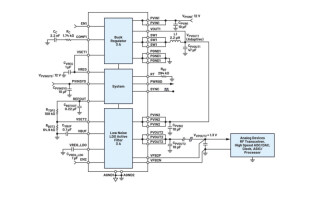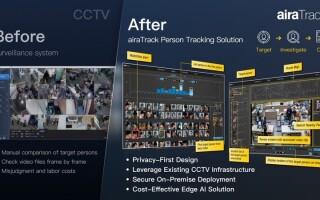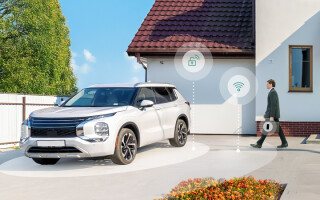The Future of In-Vehicle Infotainment with Emerging Technologies
March 31, 2025
Blog

In-vehicle infotainment (IVI) is now more than just music and navigation—it’s an intelligent driving companion. The inclusion of AI-driven systems, AR/VR, and 5G enhances connectivity and decision-making and elevates the experience, making driving safer and more interactive.
In this article, Ranganathan, a product engineering expert, explains the need for interoperability, functional testing, security, and advanced infotainment. Emerging technologies like AI, 5G, digital twins, and AR/VR are transforming IVI, aligning it with autonomous and connected mobility. AI-driven personalization, immersive interfaces, Software-Defined Vehicles (SDVs), OTA updates, and predictive maintenance are setting new standards and shaping the future of automotive technology. Gain insights to stay competitive and informed in a rapidly evolving automotive landscape.
How is In-Vehicle Infotainment evolving, and what emerging trends are redefining the industry?
IVI is becoming Smart and Intelligent, and with the Connected designs, it aims to deliver a more personalized and connected experience to the drivers and passengers. The evolution of Artificial Intelligence is another significant trend shaping the IVI systems, giving rise to more tailored, user-friendly, and intuitive solutions. The advancements in IVI are also enhancing the Vehicle HMI interactions with voice & haptics feedback. Voice recognition/Emotion Detection personalized content delivery for passengers, Intelligent Chatbots to driver assistance, High-Fidelity AV Streaming (4K/8K), Highly accelerated In-Vehicle Gaming, Predictive Maintenance, AR experiences for Vehicle troubleshooting, remote assistance, productivity/work applications like (MS Teams, Zoom), Vehicle-to-Everything (V2X) are among the many emerging trends re-defining the IVI segment in Automotive. In the future, with Self-Driving cars, the level of passenger engagement will shape the direction of IVI.
As the demand for SDVs grows, how can companies leverage this for in-vehicle infotainment systems while ensuring the safety aspect as well?
Software-defined vehicles are a paradigm shift from traditional automobiles. Since Software is prioritized as the central component in software-defined vehicles, the concept augurs well for key innovations in taking the automotive experience many levels higher, and in-vehicle infotainment systems are an integral part of it. Multi-channel AV streaming, Seamless Navigation, Route Planning based on zonal/geographical information, enhanced visual user experiences, VR/AR gaming, and customized applications for different categories of vehicles are among the many features that can be brought to life with a relatively quicker time to market, extracting the maximum out of the capabilities of underlying hardware & connectivity, while ensuring the safety aspects with a host of ADAS features.
How can in-vehicle infotainment be integrated with other in-car technologies and services to create a more seamless and personalized experience for both drivers and passengers?
A highly abstracted, middleware-enhanced, loosely coupled, APIs-based approach in IVI software design will be essential to quickly integrate applications and/or features. Technically, this can be seen as more of a horizontal integration of various technologies and software, rather than the traditional vertically aligned software development approach. Interoperability and/or compatibility of software from an array of vendors could become a big challenge, therefore, the IVI architecture needs to be flexible to adapt. With the variety of ADAS solutions already part of the IVI interfaces in production vehicles, seamless integration and personalized experiences will further be enhanced with Advanced Telematics, Remote/Roadside Assistance, OTA upgrades for Maps and UI, and enhanced navigation features, to name a few.
With rapid developments in the IVI space and increased software capabilities, how does functional testing keep pace & what are the challenges?
Functional Testing of IVI systems is a challenge. On the one hand, the IVI system's capabilities and range of functions are growing at a rapid pace, while on the other hand, the intuitive nature brings out even the smallest of errors to the vehicle occupants. This places great emphasis on thoroughly tested solutions for functionality & safety. In addition, backward compatibility and interoperability robustness will also need to be tested, as the vehicle’s lifetime can be significantly higher than the lifetime of IVI applications. To address these requirements, an automated test system with continuous integration – deployment, along with a functional safety certification process, is a critical need. The objective is to ensure that planning, detection, and fault tracking happen right from the design stage till the release. However, there are bound to be challenges in terms of operational, backend, load balancing, and regression testing due to the sheer vastness of the test coverage that’s needed. E.g., A multi-core CPU running the IVI will have to be tested for all cores employing IVI functions and endless fault injection combinations. Converging to fully automated testing is not entirely feasible due to some of the specific needs of testing, e.g., the Quality of AV streaming, latency measurements, etc.
What strategic partnerships and collaborations are crucial for automakers to cultivate to deliver a compelling and diverse in-vehicle infotainment experience, and how can they build a sustainable ecosystem that benefits all stakeholders?
Automakers traditionally have been engaging with leading OEM & Multi-tier level suppliers, driving their choice of operating platforms and proprietary software applications, while the OEMs could deliver the systems in line with the progress over the past decades. However, with the focus on EVs, Autonomous mobility, and Self-Driving cars, the range of technologies & applications has simply skyrocketed. Automakers are trying to align with this trend by increasing their in-house capabilities, mainly in terms of Software development, Integration & testing, however, this is still quite difficult for many automakers to adapt to. They will now have to depend on a number of external partnerships & collaborations with automotive software companies and mid-level system integrators, to ensure that they keep pace with the rapid advancements, yet ensuring sustainability. The scope of such an exercise can be massive for the automakers, more so in the future of fully autonomous vehicles.
Which emerging technologies are expected to have the biggest impact on the future of in-vehicle infotainment, and how can automakers prepare for these advancements?
The biggest technology impacts in the IVI space in the future, that we see, are going to be in AI, Machine Learning, AR/VR, and Cellular communication. A modern passenger vehicle is a culmination of technologies. The IVI needed today demands Smart, Intelligent features, ever-expanding HUDs, Advanced Telematics, and complex ADAS features, while being more Software & data-driven, creative & configurable. To keep up with such demands, a significant influx of Artificial intelligence, IoT, and 5G technologies has been needed. Whether it is in delivering personalized user experiences, intelligent navigation features, voice recognition & multi-level ADAS, while maintaining V2X connectivity through 5G, newer technologies are paving the way for a massive wave of improvements in the future. Automakers are already challenged with the need to not only deliver cutting-edge automotive features but also to establish sustainable ecosystems & practices. Digital Twins, Cloud-focused solutions, collaborations with software firms & integrators for specific technology expertise & consistent tracking of technology trends are some of the ways that can help automakers prepare for these advancements.
To know more about In-Vehicle Infotainment and related advancements that can drive innovation to your automotive solutions, let's connect and discuss how MosChip can help.
Ranganathan comes with about 23 years of experience in Product Engineering Services through Embedded Systems Design & Development across Defense, Automotive, Industrial & Consumer Electronics, and working on a wide gamut of technologies including Embedded Systems, Multimedia, In-Vehicle Infotainment, System Software Development & Real-time Operating Systems towards creating Product Engineering Solutions. Technical leader responsible for creating the vision and development of Digital Transformation Solutions
Driving a strong team in FPGA design, Embedded Software, Platform Management, Multimedia & AI Technologies to create industry-standard & custom solutions using a multitude of technologies including IoT, Artificial Intelligence, Machine Vision, Audio/Video Processing, Graphics, Data processing & virtualization. Has been delivering solutions and highly integrated, mission-critical systems and applications to leading global design houses & OEMs.





